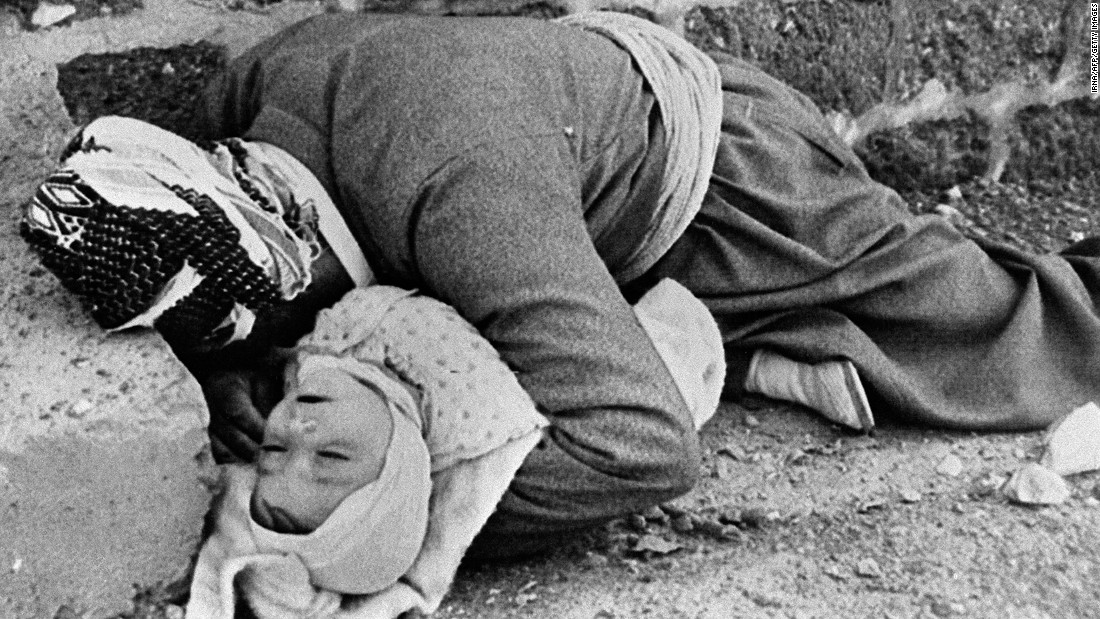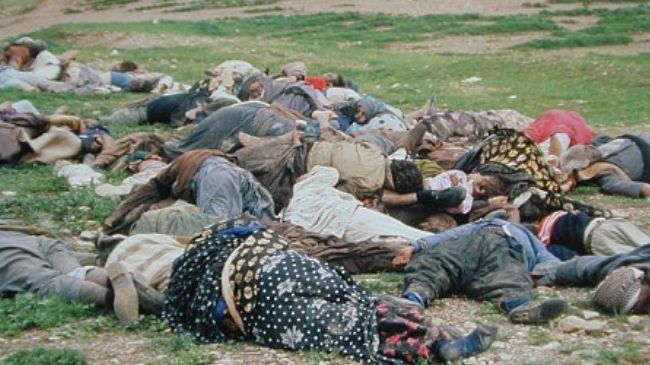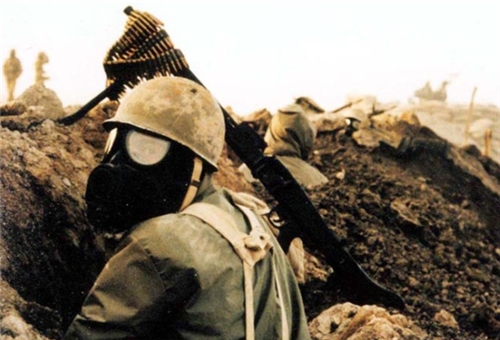 WASHINGTON A covert U.S. program during the Reagan administration provided Iraq with critical battle planning assistance at a time when U.S. intelligence agencies knew that Iraqi commanders would employ chemical weapons in waging the decisive battles of the Iran-Iraq war, according to senior military officers with direct knowledge of the program.
WASHINGTON A covert U.S. program during the Reagan administration provided Iraq with critical battle planning assistance at a time when U.S. intelligence agencies knew that Iraqi commanders would employ chemical weapons in waging the decisive battles of the Iran-Iraq war, according to senior military officers with direct knowledge of the program.
These officers, most of whom agreed to speak on the condition that they not be named, spoke in response to a reporter's questions about the nature of gas warfare on both sides of the conflict between Iran and Iraq from 1981 to 1988. Iraq's use of gas in that conflict is repeatedly cited by President George W. Bush and, last week, was cited by his national security adviser, Condoleezza Rice, as justification for "regime change" in Iraq.
The covert program was carried out at a time when President Ronald Reagan's senior aides, including Secretary of State George Shultz, Defense Secretary Frank Carlucci and General Colin Powell, then the national security adviser and now the secretary of state, all were publicly condemning Iraq for its use of poison gas, especially after Iraqi forces attacked Kurdish civilians in Halabja in March 1988.
During the Iran-Iraq war, the United States decided it was imperative that Iran be thwarted, so it could not overrun the important oil-producing states in the Gulf. It has long been known that the United States provided intelligence assistance to Iraq in the form of satellite photography to help the Iraqis understand how Iranian forces were deployed against them. But the full nature of the program, as described by former Defense Intelligence Agency officers, was not previously disclosed.
Powell, through a spokesman, said the officers' description of the program was "dead wrong," but declined to discuss it.
Carlucci said, "My understanding is that what was provided" to Iraq "was general order of battle information, not operational intelligence."
"I certainly have no knowledge of U.S. participation in preparing battle and strike packages," he said, "and doubt strongly that that occurred."
Later, Carlucci added, "I did agree that Iraq should not lose the war, but I certainly had no foreknowledge of their use of chemical weapons."

Though senior officials of the Reagan administration publicly condemned Iraq's employment of mustard gas, sarin, VX and other poisonous agents, the U.S. military officers said that Reagan, Vice President George Bush and senior national security aides never withdrew their support for the highly classified program, in which more than 60 officers of the defense agency were secretly providing the Iraqi general staff with detailed information on Iranian deployments, tactical planning and bomb-damage assessments.
The Iraqis shared their battle plans with the Americans, without admitting the use of chemical weapons, the military officers said. But the Iraqi use of chemical weapons, already established at that point, became more evident in the final phase of the war.
Saudi Arabia played a crucial role in pressing the Reagan administration to offer assistance to Iraq, out of concern that Iranian commanders were sending human waves of young volunteers to overrun Iraqi forces. Prince Bandar bin Sultan, the Saudi ambassador to the United States, then and now, met with President Saddam Hussein of Iraq and then told senior officials of the CIA and the Defense Intelligence Agency that the Iraqi military command was ready to accept U.S. assistance.
In early 1988, after the Iraqi Army, with the aid of U.S. planning assistance, retook the Fao Peninsula, reopening Iraq's access to the Gulf, a defense intelligence officer, Lieutenant Colonel Rick Francona, now retired, toured the battlefield with Iraqi officers, the former U.S. officers said.
He reported that the Iraqis had used chemical weapons to cinch their victory, one former defense agency official said. Francona saw zones marked off for chemical contamination, and containers for the drug atropine scattered around, indicating that Iraqi soldiers had taken injections to protect themselves from the effects of nerve gas that might blow back over their positions.
(Francona could not be reached for comment.)
CIA officials supported the program to assist Iraq, but were not involved. Separately, the CIA provided Iraq with satellite photography of the war front.

Colonel Walter Lang, retired, the senior defense intelligence officer at the time, said in an interview that he would not discuss classified information, but added that both DIA and CIA officials "were desperate to make sure that Iraq did not lose" to Iran.
"The use of gas on the battlefield by the Iraqis was not a matter of deep strategic concern," he said. What Reagan's top aides were concerned about, he said, was that the Iranians not break through to the Fao Peninsula and spread the Islamic revolution to Kuwait and Saudi Arabia to the south.
Iraq did turn its chemical weapons against the Kurdish population of northern Iraq, but the intelligence officers say they were not involved in planning any of the military operations in which these assaults occurred.
They said the reason was that there were no major Iranian troop concentrations in the north and the major battles where Iraq's military command wanted assistance were on the southern front.
Patrick E. Tyler The New York Times
Monday, August 19, 2002